The suet I buy for the woodpeckers smells delicious. Every time I peel the wrapper, it unleashes a rich, peanutty fragrance so overpowering, so enticing, I find it almost impossible to resist. The ingredients are simple enough—“Rendered Beef Suet, Chopped Peanuts, Peanut Butter.” All good stuff. So why the hell not? Just for curiosity’s sake? A little nibble couldn’t hurt. The warning on the label, “Not for human consumption,” is just the company covering its ass, right? Surely this high-quality product comes from a sanitary facility. It seems so wholesome and pure, not like the malodorous slop in a tin of cat food. And god knows I’ve eaten far worse things in my life.
Should I give in to temptation?
No. As always, I refrain. Peanut butter suet will have to remain a pleasure of the nose. Anyway, I buy it for the birds, who give me much more satisfaction than their food ever could. And boy do they love it!
Downy Woodpecker loves it (so does patiently waiting Chickadee).
Hairy Woodpecker will get its big schnoz in there too.
Red-bellied Woodpecker eats it loudly.
Pileated Woodpecker both loves and makes a mess of it.
And it’s not just woodpeckers. Carolina Wrens, Red-winged Blackbirds, Blue Jays…and of course American Crows will contort themselves however necessary to get that fatty, energy-packed goodness.
Yep, suet is an essential component for any yard bird enthusiast, but as I was writing the introduction to this post, I found myself suddenly curious about the etymology of the word and the way it’s used in the US. Some cursory research told me suet can be traced to the Middle English swete, the Old French siu, and allll the way back to the Latin sebum (also possibly related to the word soap), meaning tallow or grease. Isn’t English fascinating? Always a bunch of words for one thing (suet, tallow, grease, fat, lard). I’m sure there’s a reason why in American English suet almost always refers to the lump of fat we put out for birds, while the terms we use for cooking are usually fat or grease. But hell if I know.
All I know is this week I’m gonna ignore my New World pedigree and embrace my British ancestry (61.5%, if my DNA is telling the truth). Why? Because I want to eat some suet. After all, the holiday season is upon us, and why should birds have all the fun?
That’s right—it’s time to make a traditional Christmas pudding! Not the chocolate/vanilla pudding of Jell-O infamy, but the kind that would delight Bob Cratchit after besotting himself on his one day off with roast goose and punch. A pudding loaded with dried fruit, winter spices, and, yes, the fat of a cow. This will be my second go. Last year’s pudding was such a success (using this recipe), I decided to make it an annual tradition.
First I gathered the supplies. What a lot of them there are, including eight ounces of our main ingredient. The good gentleman manning the butcher counter squinted magnificently when asked if he had any beef suet on hand. Only did correcting to beef fat clear the confusion and bring out his Pittsburghian charm.
“No.”
I was crestfallen for a moment only. A memory flickered. There was leftover suet from last year’s pudding! What I needed was buried in the freezer—by some miracle exactly eight ounces, one half pound (also what the British call a dollar). After a quick stop at the liquor store to fetch some brandy, I had everything ready.
First things first. The day before, you gotta make some candied peel and give the raisins an overnight soaking in brandy and citrus juice.
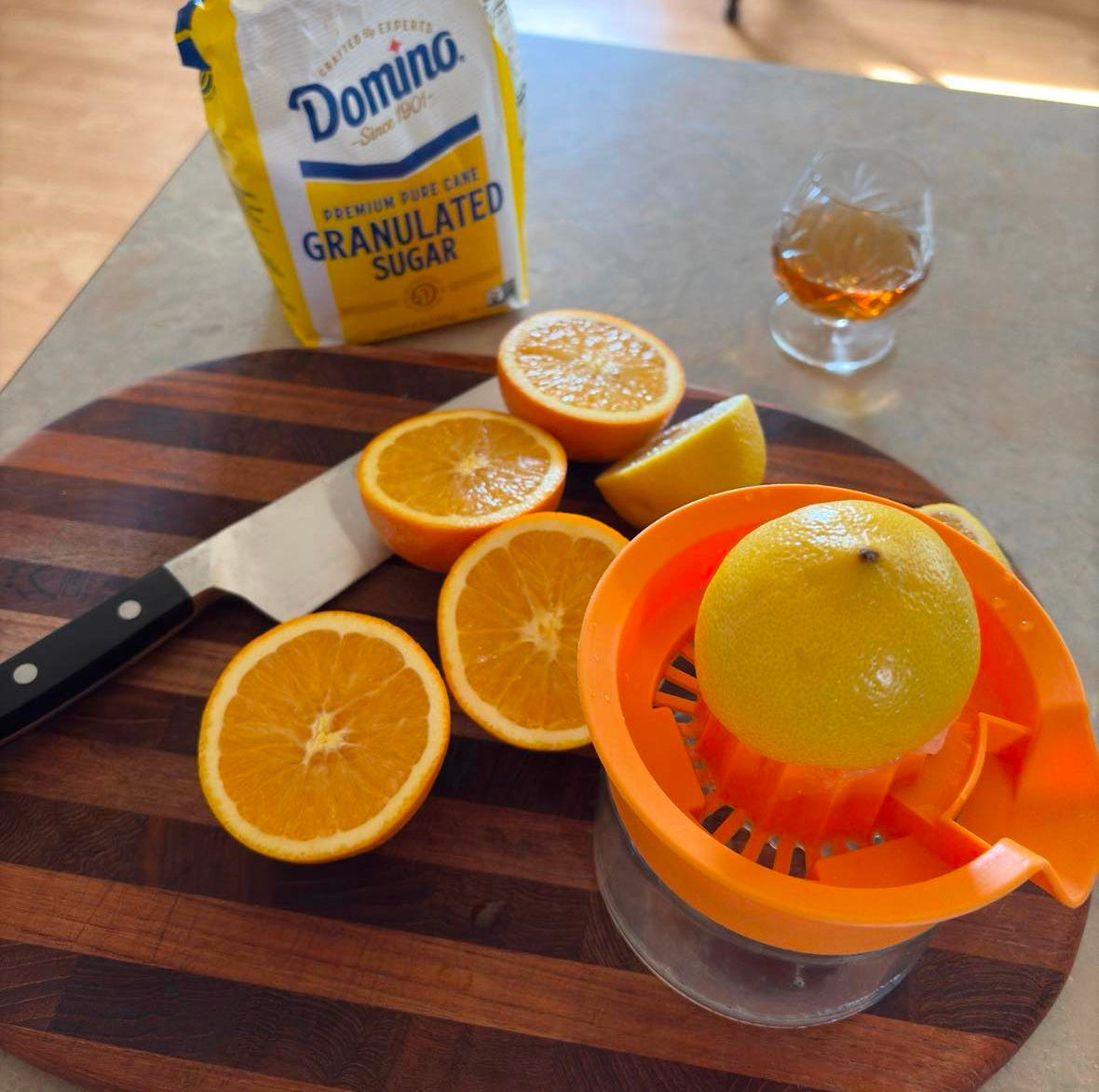
The next day I poured another brandy and summoned my sous-chef Santiago to help assemble the puddings. After combining all the stuff (warning—this recipe easily makes triple what it claims), we realized we almost forgot the peel! Luckily the mistake was discovered, and that important flavor component was incorporated into the pudding basins before the steaming. Here’s where I have to admit that an unsteamed pudding looks a lot like what was forcibly jettisoned from my innards during a recent bout with stomach flu.
Fully prepped, the puddings were ready for their bath—the basins spend no fewer than eight hours simmering in water, with special care taken not to let the water boil off. As instructed, I covered the puddings with a pleated wax paper/aluminum foil contraption and tied a nifty little handle with kitchen string.
Eight hours (and brandies) later, they were done. Out they came.
Once cooled, atop the fridge they went.
There they will stay, curing at room temperature until Christmas Day, whereupon they will be flamed, doused with brandy cream, and devoured by everyone but my father and brother, who despise raisins and would sooner take a bite of a suet cake, corn or no.
Stay tuned for a video of the big unveiling!
Chef’s Note 1—For whatever reason I screwed up and didn’t dice the suet into tiny bits. My hope is that it renders and blends into the pudding so we’re not left with horrifyingly giant bites of fat. If this suet pudding proves “Not for human consumption,” the birds might be getting a Christmas bonus this year.
Chef’s Note 2—I got a late start. Christmas puddings are often made months before consuming to allow the myriad flavors to meld, develop, and gain complexity.
Chef’s Note 3—One duck was harmed in the making of these puddings👇
Featured Photo—White-faced Whistling Duck
The White-faced Whistling Duck is a species of whistling duck that resides in the freshwater habitats of South America and Subsaharan Africa. This vagrant porcelain version came to us from my wife Alex’s native Caracas, Venezuela, where it once decorated the home of her Aunt Sonia. This was not its first injury. It was initially broken when a picture fell from the wall due to the constant vibrations caused by our son William shooting basketballs at the hoop fastened to the side of our house. Glued back together, it was shortly dealt another blow when I dropped the portable ironing board Alex had been using in proximity to my pudding station. PSA—It probably goes without saying, but under no circumstances attempt to fold a portable ironing board above a porcelain duck after having drunk several brandies while preparing a Christmas pudding.
10/10 Recommends
Speaking of etymology, it would never have occurred to me to look into the origins of the word suet if not for this timely YouTube short conversation between Alex and dynamo etymologist Jess Zafarris. I’m sure Jess could provide a much more interesting and thorough prehistory of suet, and perhaps one day we will entreat her to do so. In the meantime, enjoy the “offbeat etymology adventures” on her wildly popular TikTok channel, including some fascinating insight on the sinister Lich-Owl 🦉⚰️
Pine Tree Farms Peanut Butter Suet Cake
Pine Tree Farms offers a variety of quality suets meant to attract an array of birds. I choose peanut butter for two reasons. First, woodpeckers love it, and I love woodpeckers. Second, it contains no corn. When I was sold a case of corn-filled suet by mistake, one of the local European Starlings immediately took note.
Where there’s one Starling, there’s a thousand, and fifteen minutes later the entire case of suet was gone, the fridge raided, and our bank account hacked. Thus I recommend peanut butter, which seems to keep the woodpeckers happy and the gluttonous mobs away 🥜 🚫 🐦⬛
That’s all for this week. Have you ever made a traditional Christmas pudding? Have you ever been tempted to taste the birds’ suet? Have you…actually tasted the birds’ suet? Maybe you make your own and feel perfectly safe doing so. As always, let’s talk about it in the comments.
Until next time, bird your ass (or arse, as the British say) off!
nwb

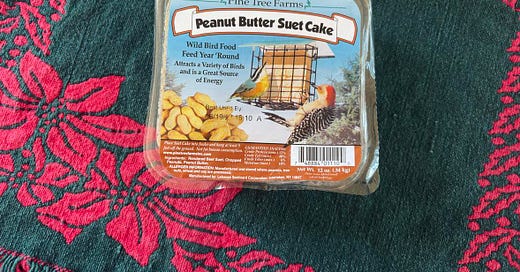



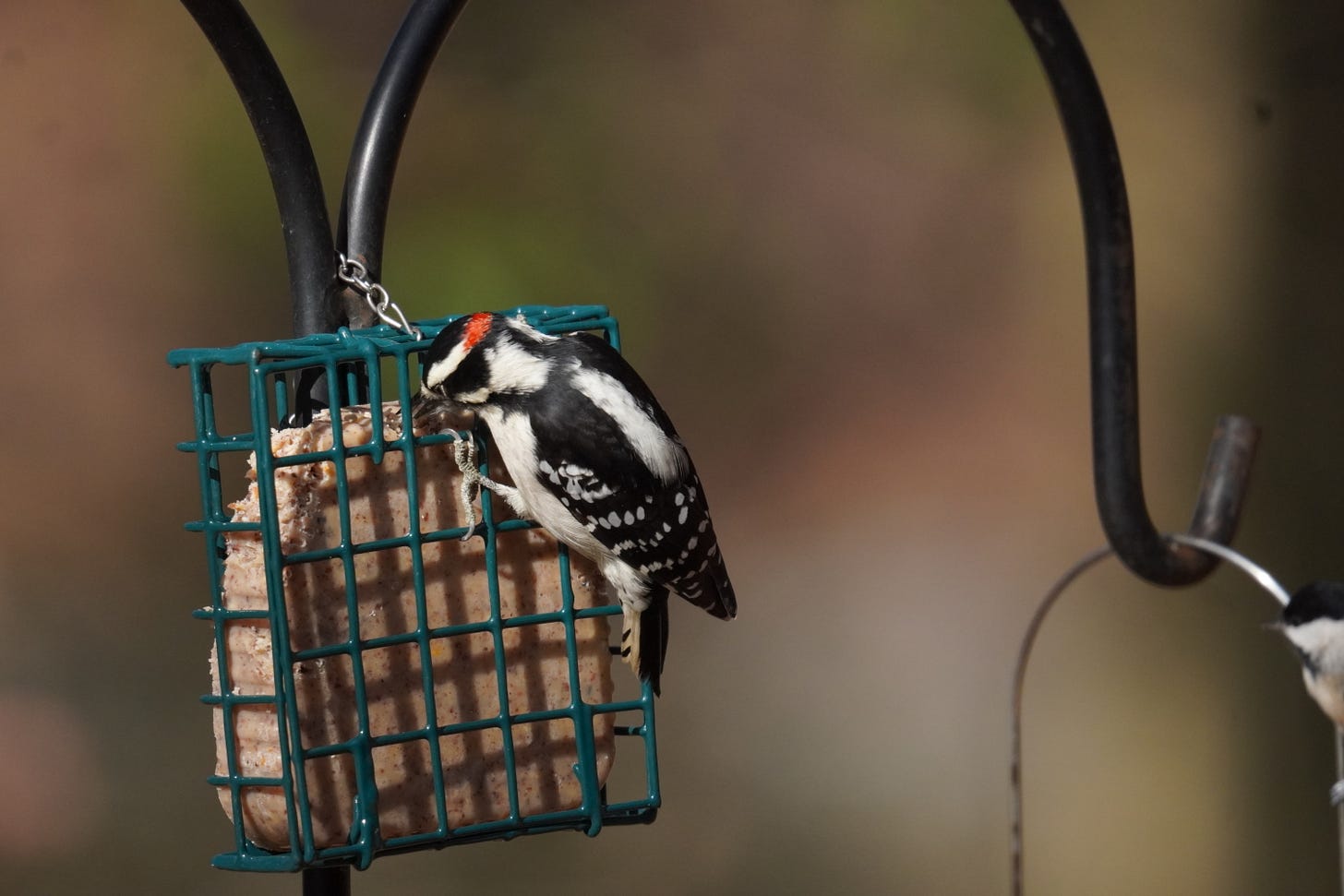

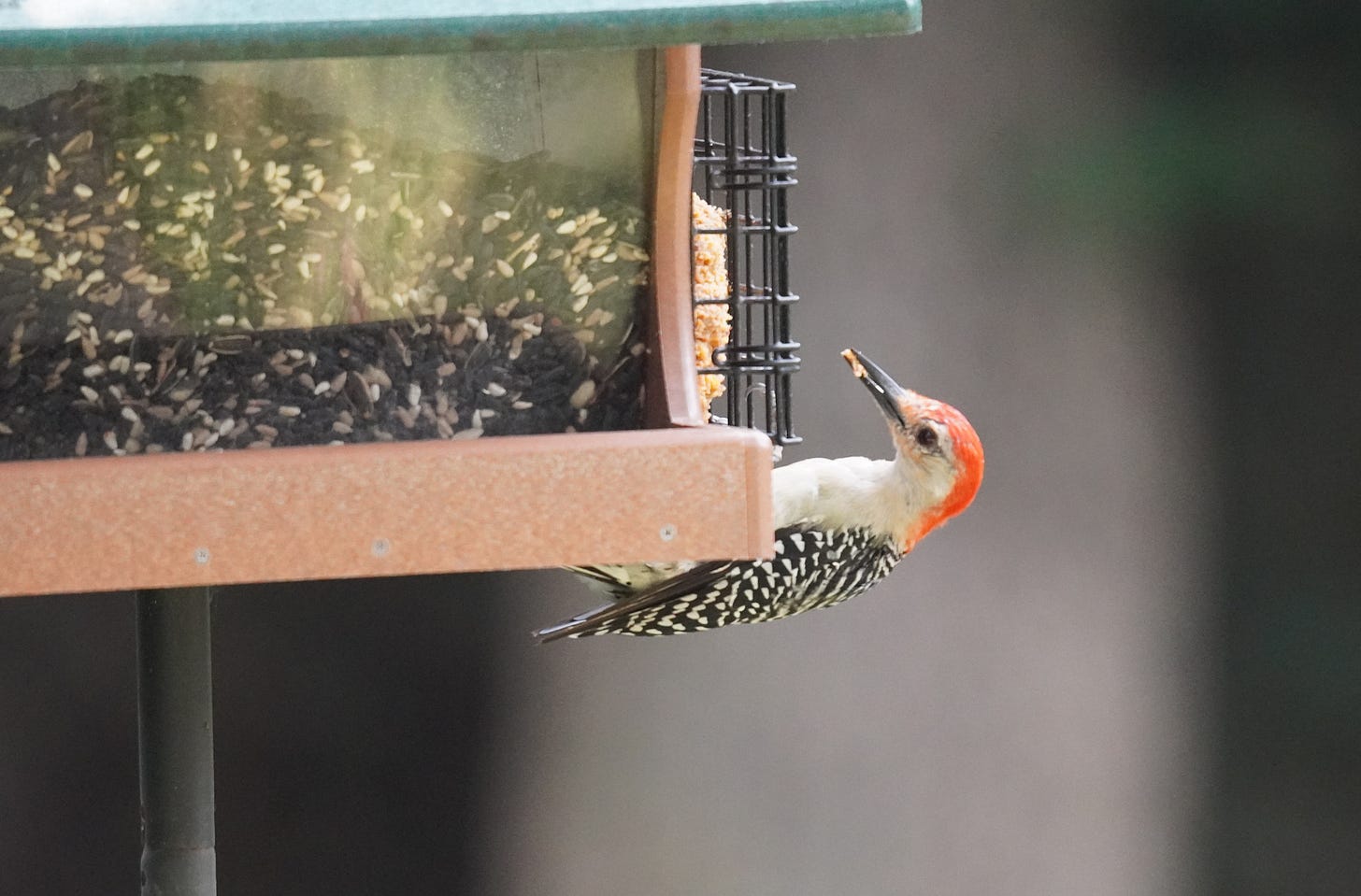

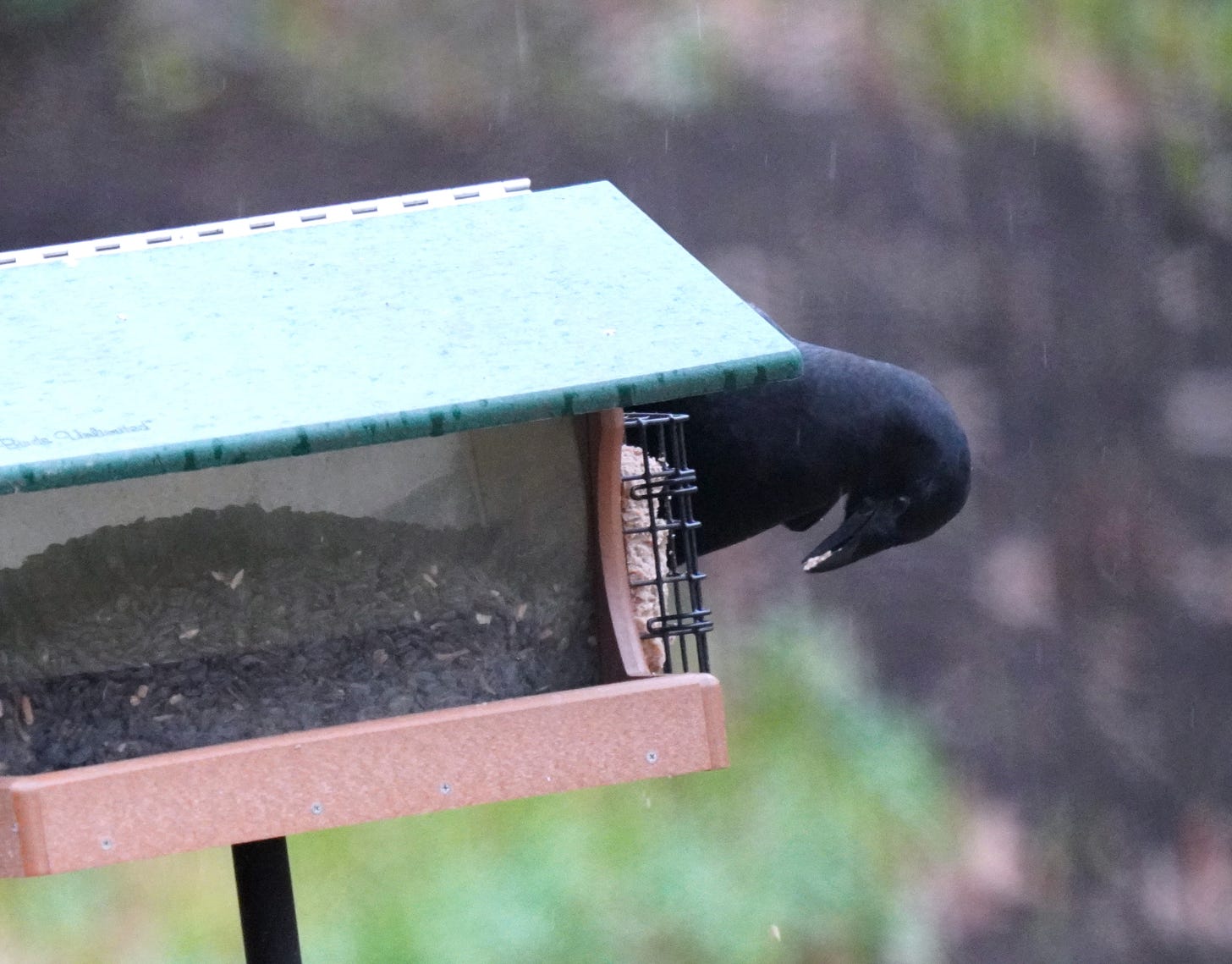

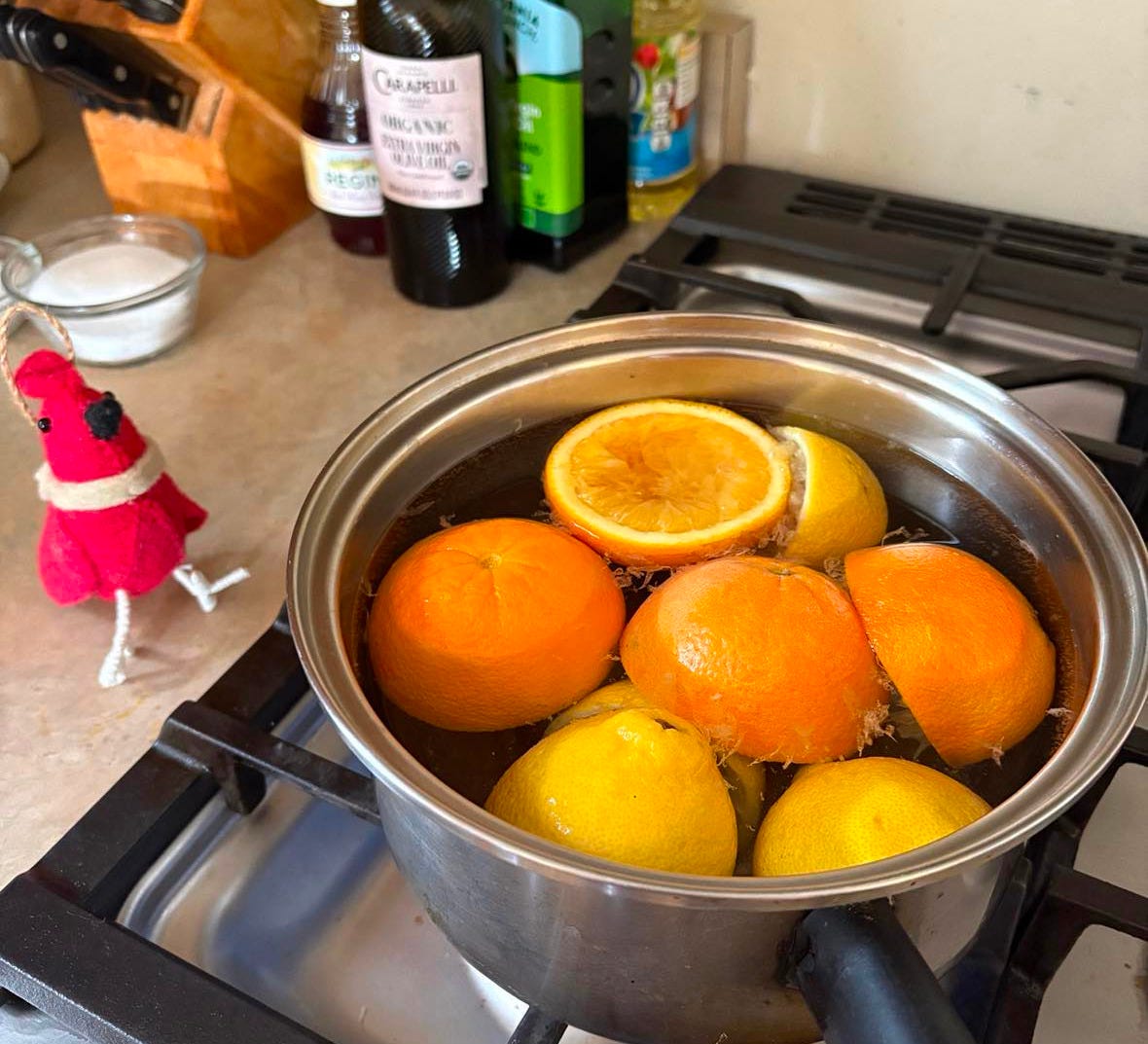

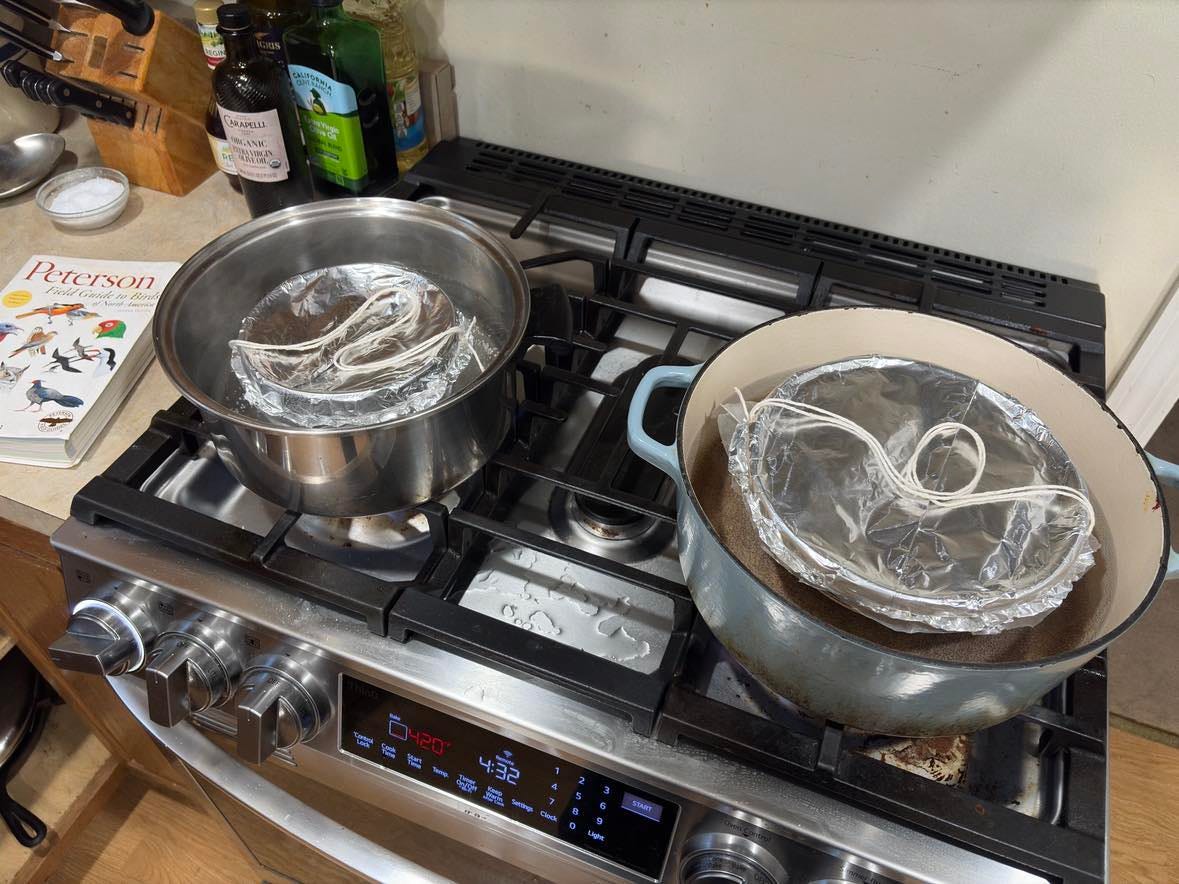
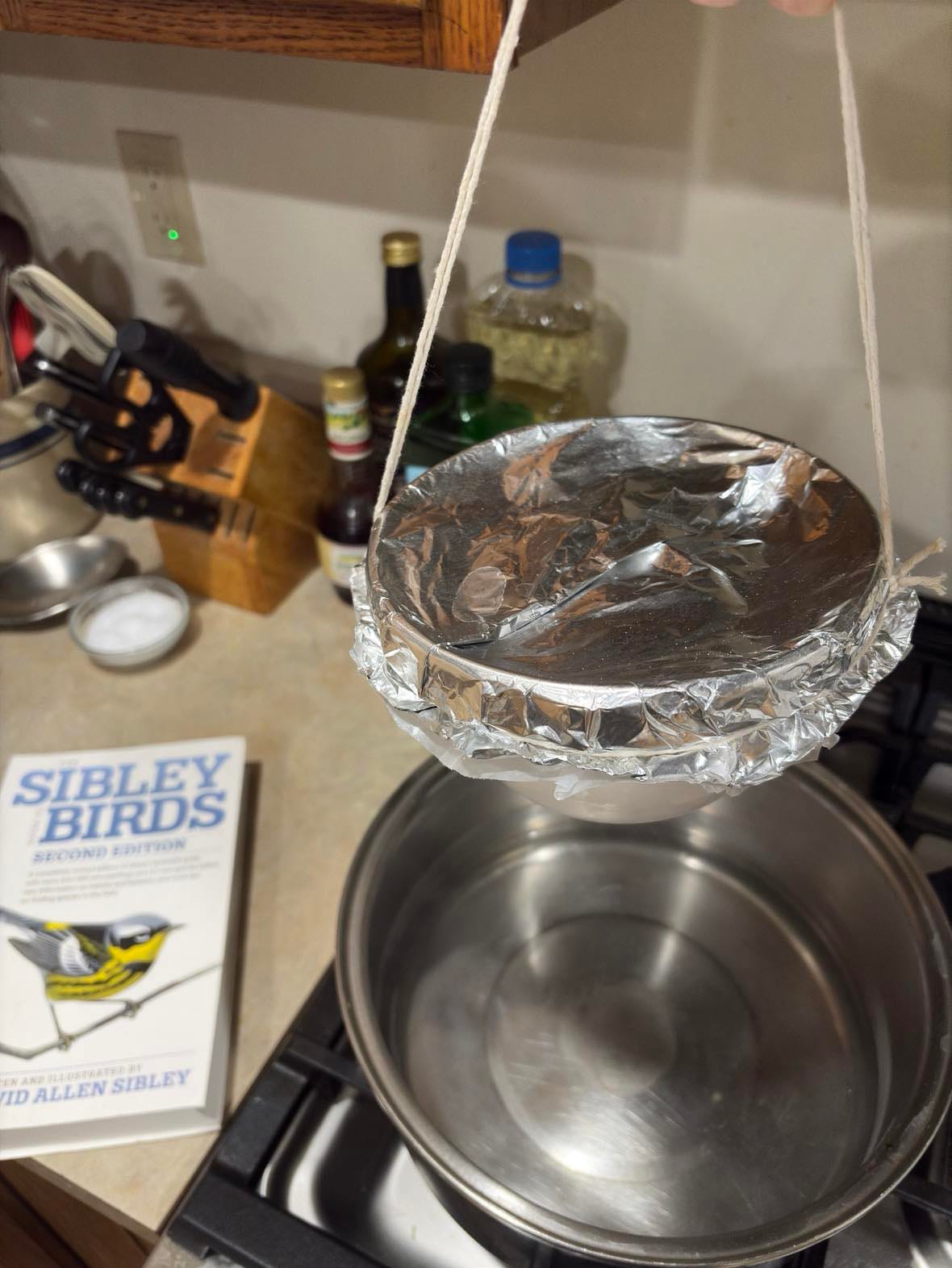

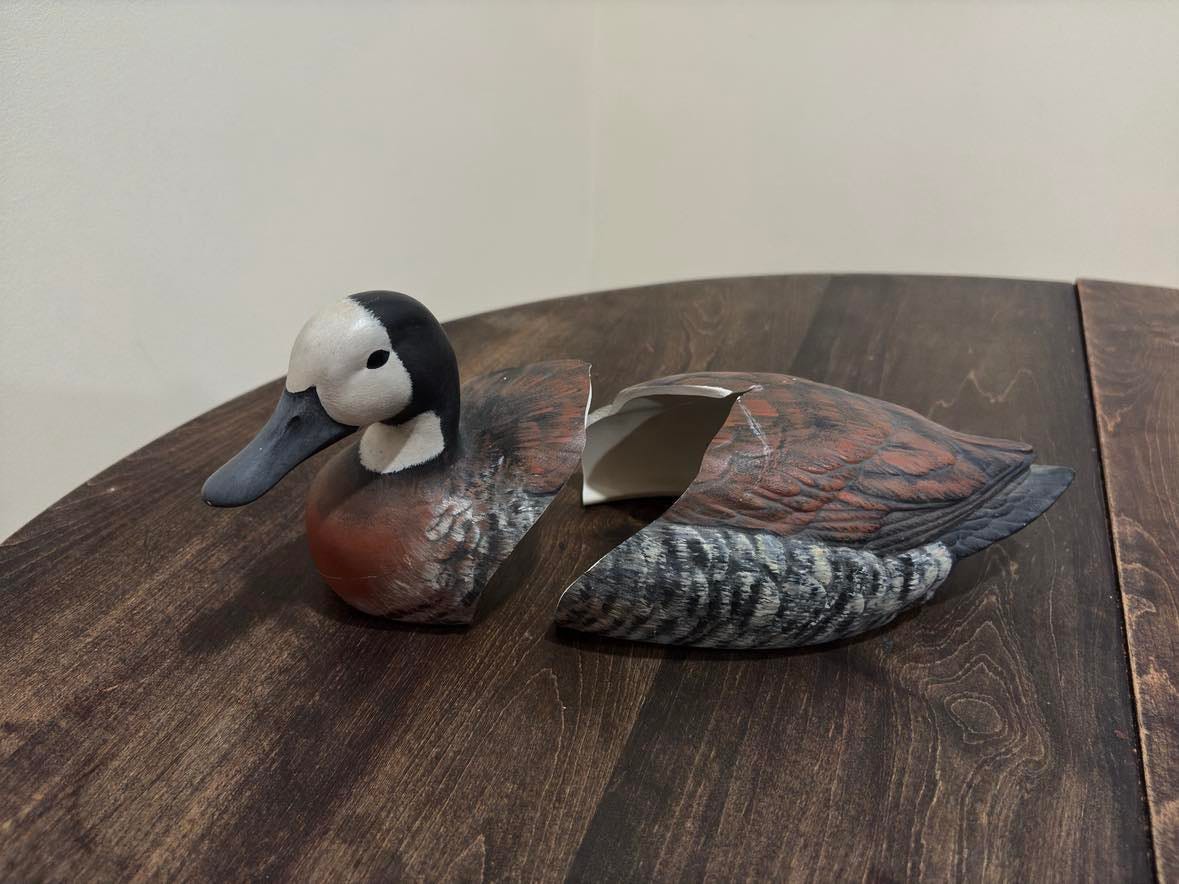
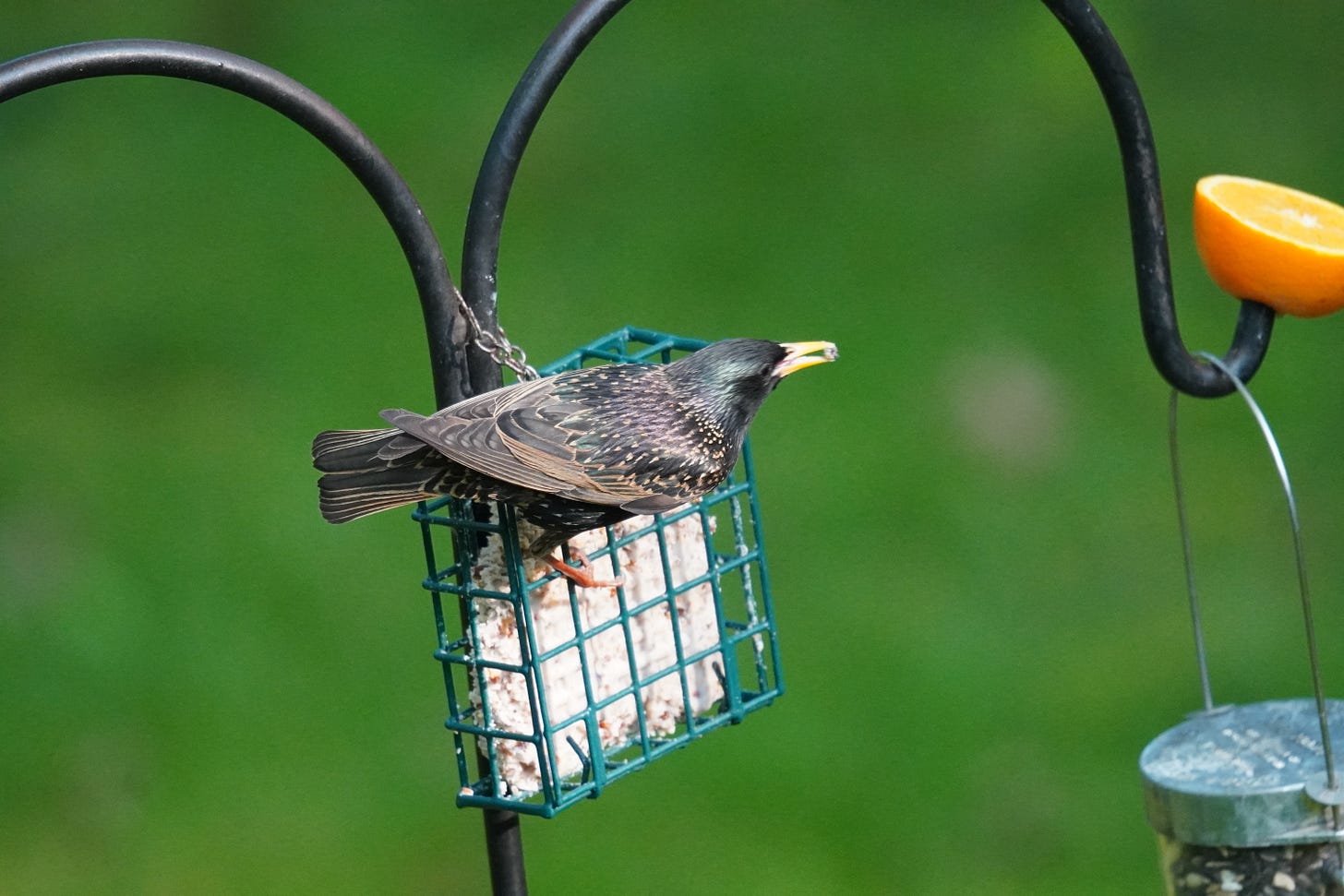
Wonderful piece. I have the same thought every time I open some suet for my feeder. "Well just a quick bite wouldn't hurt...right? Nobody has to know!" I'm allergic to beef, so seeing it on the ingredients is enough to deter me. Otherwise, who knows. Enjoyed the etymological angle, the Cratchit shoutout, and commend the lengths you've gone to to create a Christmas treat fit for a birder.
Awesome and love the images of the variety of woodpeckers getting the uet. That American Crow looks seriously focused on getting more!